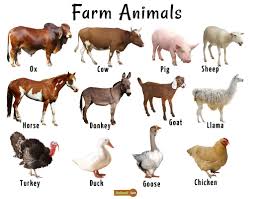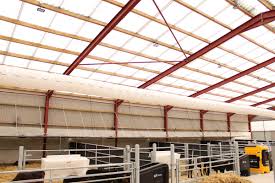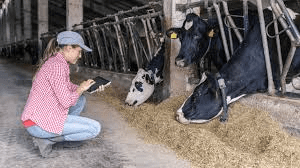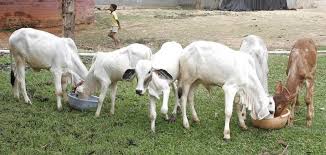Livestock rearing is the practice of breeding and raising animals for various purposes, including food, labor, and other products. It plays a crucial role in agriculture and the economy worldwide.
By understanding the principles of livestock rearing, farmers can ensure healthy animals, sustainable production, and efficient management of resources. This article provides an overview of livestock rearing, its benefits, types of livestock, factors to consider before starting, and housing and infrastructure requirements.
Benefits of Raising Livestock
Raising livestock offers numerous advantages, both economically and socially. Here are some key benefits:
1. Food Production: Livestock provides a significant source of food, including meat, milk, eggs, and other dairy products. These are essential for human nutrition and are staples in many diets worldwide.
2. Economic Opportunities: Livestock farming can be a profitable venture. Farmers can sell animal products in local and international markets, contributing to their income and supporting the economy.
3. Soil Fertility: Livestock manure is a valuable fertilizer. It enriches the soil with nutrients, promoting plant growth and improving crop yields.
4. Employment Generation: The livestock sector creates job opportunities in farming, processing, and distribution. This is especially important in rural areas, where agricultural employment is vital.
5. Cultural Significance: In many cultures, livestock rearing is a traditional practice that plays an essential role in community identity and cultural heritage.
Types of Livestock and Their Uses

There are various types of livestock, each serving different purposes. Here are the main categories:
1. Cattle: Cattle are raised for meat (beef), milk, leather, and draft power. For example, dairy cows are raised for milk production, while beef cattle are raised for meat.
2. Sheep: Sheep are used for meat (lamb or mutton), wool, and milk. For example, sheep provide wool for clothing and bedding, while some breeds are raised primarily for meat.
3. Goats: Goats are raised for meat (chevon), milk, and fiber (like cashmere and mohair). For example, dairy goats are known for their high milk production.
4. Pigs: Pigs are raised for meat (pork) and by-products (like leather). For example, pigs are often raised in intensive systems for high meat yield.
5. Poultry: Poultry includes chickens and turkeys raised for meat and eggs. For example, chickens are one of the most commonly raised poultry species for both meat and egg production.
6. Horses: Horses are used for work (draft animals), sport, and companionship. For example, horses are used for riding, racing, and in agriculture for plowing fields.
Factors to Consider Before Starting Livestock Rearing
Before starting livestock rearing, several factors should be considered to ensure success:
1. Land Availability: Ensure you have sufficient land to accommodate the livestock and provide space for grazing or shelter.
2. Climate and Environment: Consider the climate of your region, as different animals thrive in different environments. For example, goats prefer dry, warm areas, while cattle can adapt to various climates.
3. Animal Welfare: Ensure you can provide a humane living environment, including proper shelter, food, and care for the animals.
4. Market Demand: Research the market demand for specific livestock products in your area. This will help you choose the right type of livestock to raise.
5. Financial Investment: Evaluate the costs involved, including purchasing animals, feed, veterinary care, and infrastructure. Have a budget and financial plan in place.
6. Knowledge and Skills: Familiarize yourself with animal husbandry practices. Understanding animal health, nutrition, and breeding will improve your chances of success.
Read Also: 17 Medicinal Health Benefits Of Ambrosia psilostachya (Western Ragweed)
Housing and Infrastructure for Livestock

Providing adequate housing and infrastructure is vital for the health and productivity of livestock. Here are some essential considerations:
1. Shelter Requirements: Livestock needs shelter to protect them from harsh weather conditions (rain, heat, cold). Proper ventilation is also important to prevent respiratory issues.
2. Space Considerations: Ensure adequate space for each animal to move freely. Overcrowding can lead to stress, injuries, and health problems.
3. Fencing: Strong and secure fencing is necessary to keep livestock safe from predators and prevent them from wandering off. Choose appropriate fencing materials based on the type of livestock.
4. Water Supply: Access to clean and fresh water is crucial for livestock health. Ensure a reliable water source and consider automatic waterers for convenience.
5. Feed Storage: Build a safe storage area for feed to protect it from moisture and pests. Properly stored feed will prevent spoilage and ensure animals receive the necessary nutrition.
6. Waste Management: Develop a waste management plan to handle manure effectively. Proper manure management helps reduce environmental impact and can be used as fertilizer.
Feeding Strategies for Different Animals
Different livestock species require specific feeding strategies for optimal health and productivity. Here are common feeding strategies for various animals:
1. Cattle: Feed cattle a balanced diet that includes forage (grass, hay) and concentrate (grains). For example, supplementing with minerals and vitamins ensures they receive all necessary nutrients.
2. Sheep: Sheep thrive on a diet of pasture, hay, and grains. For example, during lambing season, provide high-energy feed to support the nutritional needs of pregnant ewes.
3. Goats: Goats are browsers and prefer shrubs, bushes, and trees. For example, offer a mixed diet that includes hay and grains while ensuring access to fresh forage.
4. Pigs: Pigs are omnivores and require a balanced diet of grains, protein sources, and vitamins. For example, use commercial feed pellets formulated for pigs to ensure proper nutrition.
5. Poultry: Chickens require a diet rich in protein, vitamins, and minerals. For example, layer hens need a specific layer feed to support egg production.
Health Management in Livestock
Maintaining the health of livestock is crucial for productivity. Here are essential health management practices:
1. Regular Health Checks: Schedule regular veterinary check-ups to monitor the health of livestock. This includes vaccinations and health screenings.
2. Biosecurity Measures: Implement biosecurity protocols to prevent disease transmission. For example, restrict access to livestock areas and ensure cleanliness.
3. Proper Nutrition: Provide a balanced diet to support the immune system and overall health. For example, ensure animals receive adequate protein and minerals.
4. Stress Reduction: Minimize stress in livestock by providing adequate space, social interaction, and appropriate handling techniques. For example, avoid loud noises and sudden movements when working with animals.
5. Prompt Treatment: Address health issues immediately. For example, isolate sick animals and consult a veterinarian for diagnosis and treatment.
Common Diseases and Prevention
Understanding common livestock diseases and their prevention is vital for effective management. Here are some examples:
1. Bovine Respiratory Disease (BRD): A common illness in cattle caused by viruses and bacteria. Vaccinate against respiratory pathogens and minimize stress during transportation.
2. Foot and Mouth Disease: A contagious viral disease affecting cattle, pigs, sheep, and goats. Implement strict biosecurity measures and vaccination programs where applicable.
3. Avian Influenza: A viral infection affecting poultry. **Prevention:** Keep poultry areas clean, restrict access, and vaccinate if necessary.
4. Mastitis: An infection of the udder in dairy cows. Maintain proper milking practices and cleanliness, and monitor for early signs of infection.
Read Also: 15 Medicinal Health Benefits Of Aleppo Pepper (Capsicum annuum var. annuum)
Ethical Considerations in Livestock Rearing

Ethical considerations in livestock rearing focus on animal welfare and humane treatment. Here are key points to consider:
1. Animal Welfare Standards: Adhere to standards that ensure the humane treatment of livestock. For example, provide adequate space, shelter, and access to food and water.
2. Natural Behaviors: Allow animals to express natural behaviors. For example, provide outdoor access for grazing and social interaction.
3. Ethical Breeding Practices: Avoid inbreeding and prioritize genetic diversity to improve animal health and productivity. For example, select breeding stock based on health and performance records.
4. Responsible Handling: Train handlers to work with animals humanely. For example, use low-stress handling techniques to minimize fear and anxiety.
Economic Aspects of Livestock Rearing
Understanding the economic aspects of livestock rearing is essential for successful management. Here are key points:
1. Initial Investment: Evaluate the costs involved in starting a livestock operation, including purchasing animals, feed, housing, and equipment.
2. Profitability: Analyze potential profits from selling livestock products (meat, milk, eggs). For example, consider market demand and production costs when setting prices.
3. Diversification: Explore opportunities for diversification by raising different types of livestock or adding value through processing. For example, consider selling homemade dairy products or processed meats.
4. Government Support: Research government programs and subsidies available for livestock farmers. For example, grants may be available for improving animal welfare practices or transitioning to organic farming.
Livestock rearing is a valuable aspect of agriculture that provides food, economic opportunities, and cultural significance. Understanding the benefits, types of livestock, factors to consider before starting, and housing requirements is essential for success in this field.
By following best practices in livestock management, farmers can ensure the health and productivity of their animals while contributing to sustainable agriculture. As global demand for animal products continues to grow, responsible livestock rearing will play an increasingly important role in food security and economic development.
Do you have any questions, suggestions, or contributions? If so, please feel free to use the comment box below to share your thoughts. We also encourage you to kindly share this information with others who might benefit from it. Since we can’t reach everyone at once, we truly appreciate your help in spreading the word. Thank you so much for your support and for sharing!
Read Also: How Long Does It Take a Hazelnut Tree to Produce Nuts?

